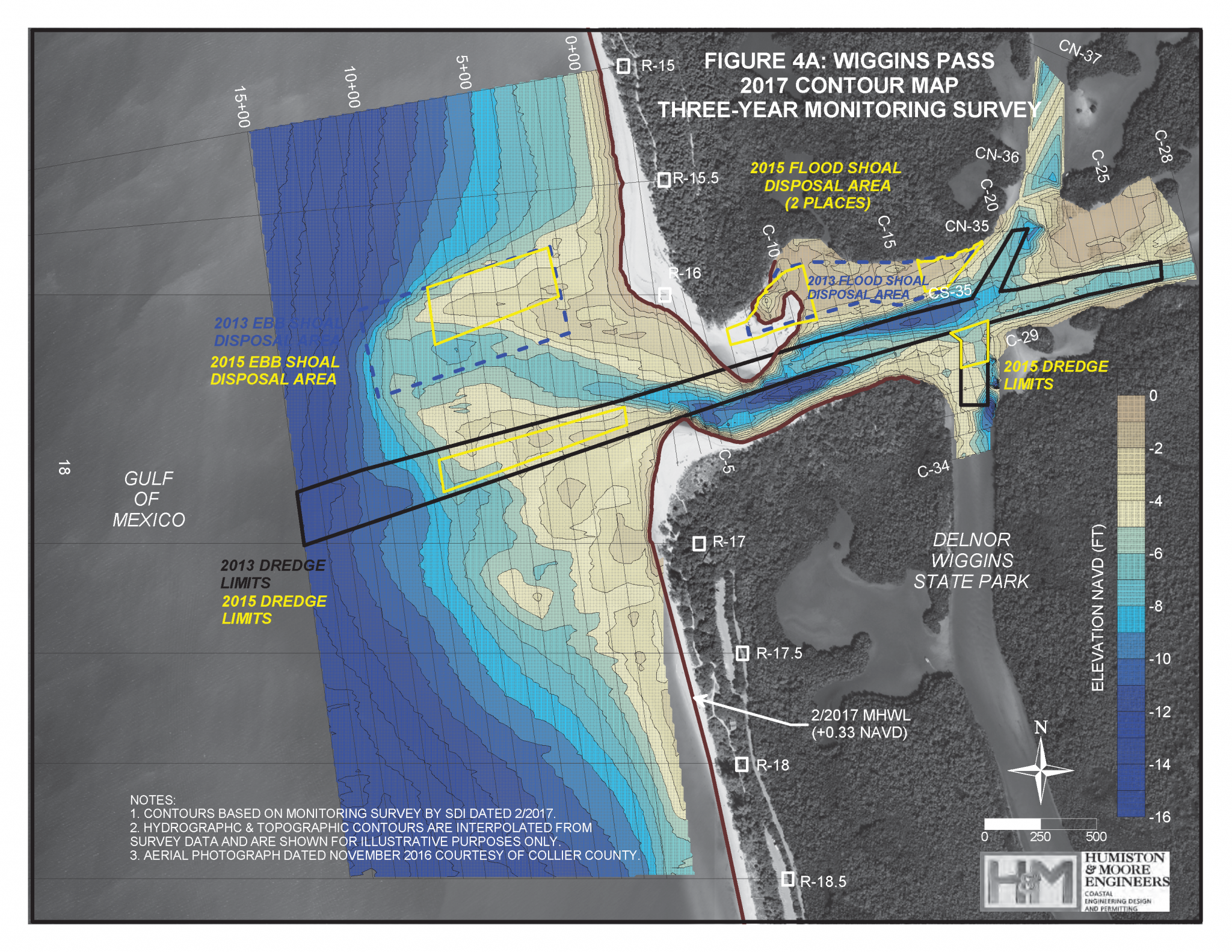by Alan Ritchie
The 2018 Scheduled Dredge of the Wiggins Pass and Doctor’s Pass Channels to Begin
The Collier County Office of Coastal Zone Management will finalize the planning and is expected to get the approval of the County Commissioners in late January, 2018. This approval will set in motion dredging projects in Collier County to replenish the sand on the beaches in three locations. Sand in the navigation channels of Doctor’s Pass and in Wiggins Pass will be placed on the three area beaches. Those beach locations include the beach just south of Doctor’s Pass, portions of the beach at the Delnor-Wiggins State Park and Barefoot Beach, just north of Wiggins Pass. This high quality local sand will greatly improve the condition of these beaches and improved navigation and boating safety in these two local inlets.
The planned Wigging Pass dredge will move about 100,000 cubic yards of beach quality sand to enhance the quality of these local beaches. It will also straighten the Wiggins Pass channel.
The recent aerial photo of Wiggins Pass shown here (insert photo #1 here) essential shows conditions in the pass around the end of calendar 2107. Straightening the channel is expected to increase the velocity of the tidal flows in and out of the Cocohatchee Estuary helping to reduce shoaling the marked channel. Subject to final funding approvals, work is first expected to occur at Wiggins Pass followed by the dredging at Doctor’s Pass.
The Wiggins Pass dredge is also expected to eliminate the shoaling that has occurred at the just inside the pass at the intersection of the southbound channel into Wild Turkey Bay toward Vanderbilt Lagoon. Work at the Doctor’s Pass location will be completed no later than April 30, 2018.
The following dredge plan for Wiggins Pass 
The last step in the process is for the contractor to adjust the red and green channel markers to reflect the updated channel alignment.
Alan Ritchie is a volunteer member of the Board of the Estuary Conservation Association, Inc. Additional information can be obtained on the ECA website at: www.estuaryconservation.org.

